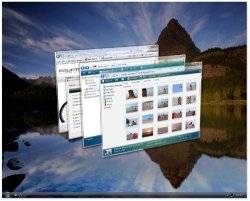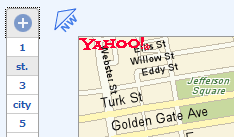This post was written by Ryan
Stewart, who is a R/WW guest blogger on Rich Internet Apps. Edited by Richard
MacManus.
In the coming months we will see a new wave of Rich Internet Applications that will
blend the web application and the desktop application in exciting new ways. There are
three technologies on the horizon that will change the way people use the web:
LaszloSystems’ OpenLaszlo, Microsoft’s WinFX (codename Avalon) and Adobe’s Flex 2.
OpenLaszlo
OpenLaszlo is a very intriguing technology.
Originally it was built leveraging the Flash Platform, but has since announced
that applications built in OpenLaszlo will be able to compile into DHTML/AJAX as well as
Flash. In fact the first option will be to use the DHTML version. The language is XML
based with some JavaScript abilities, which makes building the applications very easy.
The versatility of being able to leverage Flash or DHTML is also a major plus. It is
entirely open source and the use of XML and JavaScript makes it a good way to get started
building Rich Internet Applications quickly.

If you’re interested in seeing OpenLaszlo in action, they have a good demo app – LaszloMail.
Also check out Pandora,
a ‘web 2.0’ application for finding music, which uses OpenLaszlo. The CTO
Tom Conrad gave it great wraps in a blog post last
August:

“Eight months ago when we sat down to figure out how were were going to deliver a
compelling zero-install discovery and listening experience across Windows, Mac, and Linux
in record time we considered everything you can imagine: plain old HTML, AJAX, Flex,
OpenLaszlo to name just a few. In the end, Laszlo was the clear winner on all fronts.
Mature, reliable, and the perfect tool for the job.”
WinFX
WinFX, specifically the Windows
Presentation Foundation formerly code-named Avalon, is the biggest question mark of
the three. It is Microsoft’s answer to the Rich Internet Application space, and it’s
interesting because in many ways it’s the Bigfoot of RIAs. It uses the .NET platform and
via an XML markup language (XAML) it provides developers with an easy way to build
powerful user interfaces for all kinds of applications, both web and desktop.

As with other Microsoft technologies it will be limited to Windows machines. However
it opens up the Direct3D platform to developers – which is going to make for some amazing
user interfaces. The .NET community is huge, and WinFX is going to be the backbone of
Windows Vista, meaning that it will be an easy way to deploy applications for a brand new
operating system. Real world examples are scarce because Avalon hasn’t been released yet,
but you can see it in action by downloading Microsoft MAX. There is also an interesting
white paper on the MSDN site about using Avalon to create a
North Face In-Store Explorer. You can also get the
beta and see what WinFX has to offer.
Flex
The final technology, and the one I (Ryan) am admittedly most
excited about, is Adobe’s Flex
2. It too uses an XML based language (MXML) and as to be expected leverages the Flash
Platform. Adobe/Macromedia’s first foray with Flex required a very expensive server and
had limited adoption. This time, Adobe has opened the floodgates and made the Flex 2
framework totally free. The new version of Flex will require a new Flash Player, and
Adobe has rewritten the Flash virtual machine with a focus on speed and dependability.
They’re releasing the new player for Linux and Mac in addition to the normal Windows
version, so the potential audience is huge.

Adobe has built a Flex-AJAX bridge, which brings
the best of AJAX and the best of Flash together to create some awesomepotential.
Adobe also has ‘Apollo‘ in the
works, which will allow developers to access desktop APIs using Flex or JavaScript to
deploy desktop/web hybrid applications for times when data needs to be stored offline.
Flash is grown up from the days of ‘skip intro’ and has the potential to provide a great
user experience.

Yahoo Maps – which recently got TechCrunch’s
vote as the best mapping framework on the Web – uses Flex 1.5. Also check out the Flex 2 Style
Explorer, which provides a way to see the power and customization of Flex (requires
the Flash
8.5 beta 2 player).
Summary
All of these applications are taking the tenants of Web 2.0 – the collaborative
spirit, the user generated content – and combining them with a focus on the user
experience, which is so important to the desktop. AJAX has done a stellar job of making
people think about the web in new ways. The technologies above are going to take that to
the next level, by providing a desktop-like interface to web users.
Rich Internet Apps allow sophisticated effects and transitions that are important in
keeping the user engaged. This means developers will be able to take the amazing changes
in the Web for granted and start focusing on a flawless experience for the users. It is
going to be an exciting time for anyone involved in building the new Web, because the
interfaces are finally catching up with the content.
Ryan Stewart’s blog is Digital
Backcountry.










